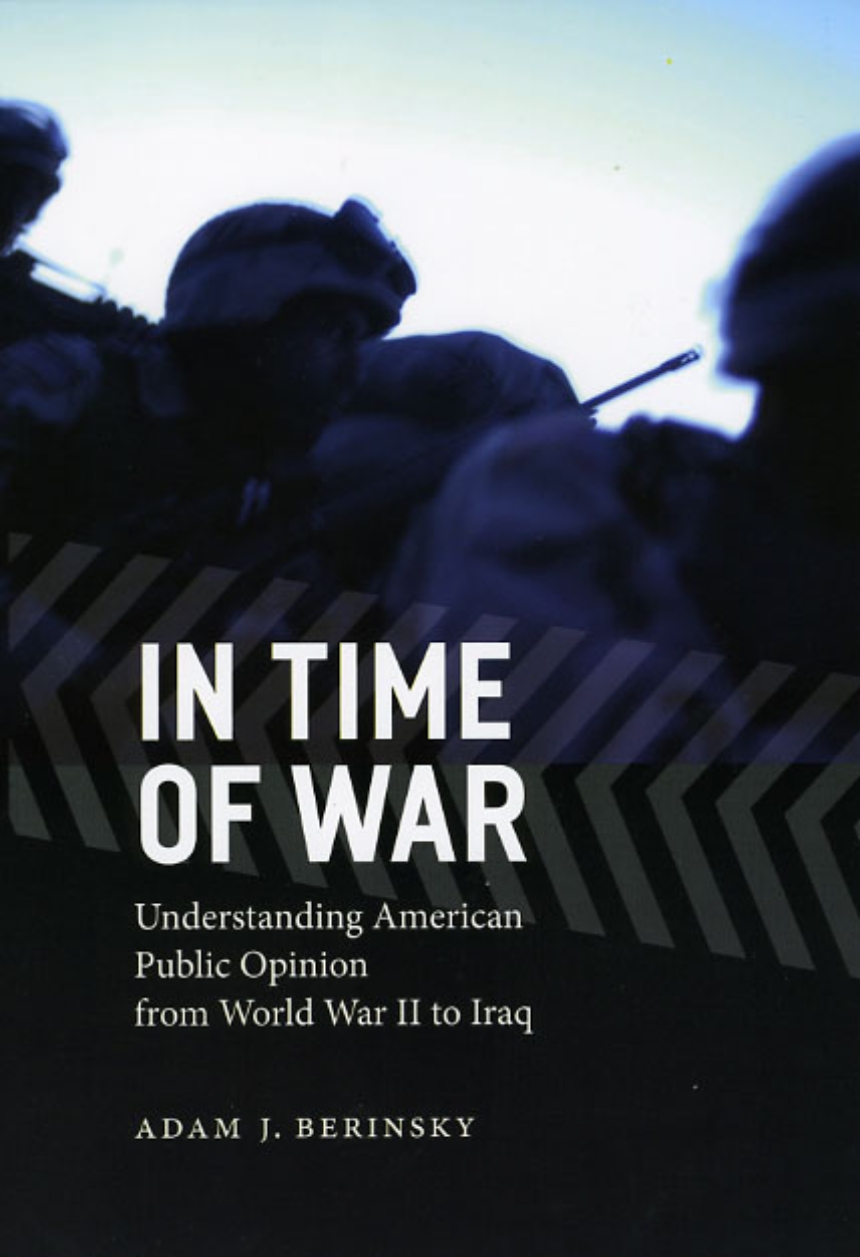In Time of War
Understanding American Public Opinion from World War II to Iraq
In Time of War
Understanding American Public Opinion from World War II to Iraq
From World War II to the war in Iraq, periods of international conflict seem like unique moments in U.S. political history—but when it comes to public opinion, they are not. To make this groundbreaking revelation, In Time of War explodes conventional wisdom about American reactions to World War II, as well as the more recent conflicts in Korea, Vietnam, the Gulf, Afghanistan, and Iraq. Adam Berinsky argues that public response to these crises has been shaped less by their defining characteristics—such as what they cost in lives and resources—than by the same political interests and group affiliations that influence our ideas about domestic issues.
With the help of World War II–era survey data that had gone virtually untouched for the past sixty years, Berinsky begins by disproving the myth of “the good war” that Americans all fell in line to support after the Japanese bombed Pearl Harbor. The attack, he reveals, did not significantly alter public opinion but merely punctuated interventionist sentiment that had already risen in response to the ways that political leaders at home had framed the fighting abroad. Weaving his findings into the first general theory of the factors that shape American wartime opinion, Berinsky also sheds new light on our reactions to other crises. He shows, for example, that our attitudes toward restricted civil liberties during Vietnam and after 9/11 stemmed from the same kinds of judgments we make during times of peace.
With Iraq and Afghanistan now competing for attention with urgent issues within the United States, In Time of War offers a timely reminder of the full extent to which foreign and domestic politics profoundly influence—and ultimately illuminate—each other.
360 pages | 70 line drawings, 38 tables | 6 x 9 | © 2009
Chicago Studies in American Politics
History: American History
Political Science: American Government and Politics, Diplomacy, Foreign Policy, and International Relations, Political Behavior and Public Opinion
Sociology: Social Change, Social Movements, Political Sociology
Reviews
Table of Contents
List of Figures
List of Tables
Acknowledgments
Chapter 1. Introduction: America at War
Part I. Historical Perspective
Chapter 2. Public Opinion and War: A Historical Perspective
Chapter 3. The Myths and Meaning of Public Opinion and World War II
Part II. The Structure of Support for War
Chapter 4. The Calculation of Costs: An Innocent Public
Chapter 5. Partisan Structure of War Support: Events, Elites, and the Public
Chapter 6. Ethnic Groups: Attachments, Enmities, and Support for War
Part III. Public Opinion and War: Back to the Water’s Edge
Chapter 7. Civil Liberties and War
Chapter 8. Elections during Wartime
Chapter 9. Conclusions
Appendix A: Description of Data and Weighting
Appendix B: Iraq War Casualty Survey Analysis
Appendix C: Congressional Record Content Analysis
Appendix D: Statistical Significance of Ethnic Variables
Appendix E: Relationship between Support for War and Support for Restricting Civil Liberties
Appendix F: NES Analysis of Retrospective War Support
Notes
References
Index